When it comes to transforming ordinary glass surfaces into stunning works of art or adding a touch of personal flair to your glassware and décor, the choice of the right paint can make all the difference. Enter the world of creativity and innovation with the “Best Spray Paint for Glass.”
Whether you’re a seasoned glass artist or a DIY enthusiast looking to embark on a new project, finding the perfect spray paint for glass is paramount. This specialized paint category offers a plethora of options, each promising impeccable adhesion, vibrant colors, and durability on glass surfaces.
In this exploration, we’ll dive deep into the world of glass spray paint, uncovering the top choices, essential features, and tips to help you achieve a flawless, professional finish on glass items of all kinds. Discover how the best spray paint for glass can unlock a world of creative possibilities.
Importance of Spray Paint for Glass:
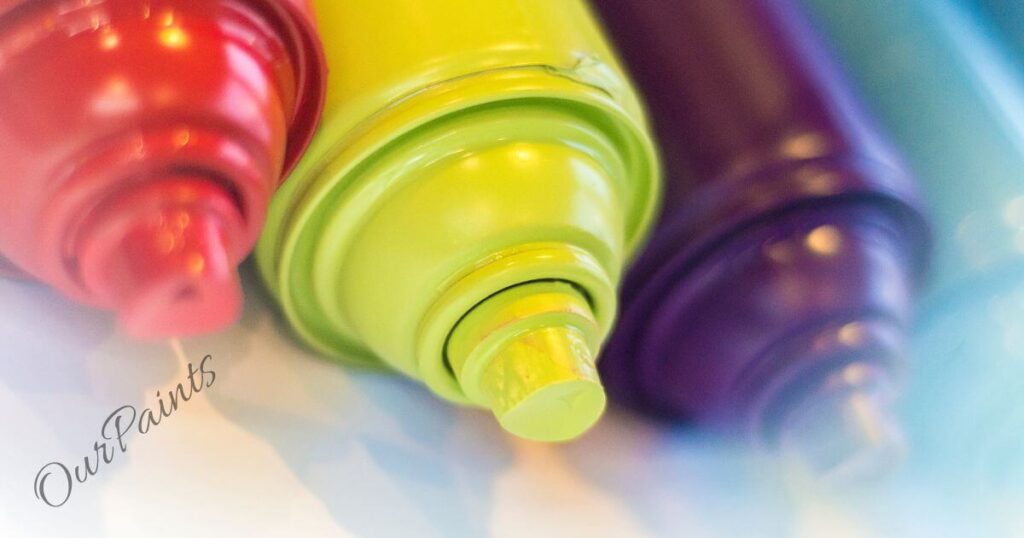
The importance of spray paint in glass projects cannot be overstated, as it plays a pivotal role in transforming plain glass surfaces into captivating works of art and functional pieces. Here are some key reasons why spray paint is essential for glass projects:
Enhanced Aesthetic Appeal:
Spray paint allows you to add a wide range of colors, finishes, and effects to glass surfaces. This versatility enables you to customize glass items to match your personal style and the specific design requirements of your project.
Transparency Control:
Spray paint for glass is available in various opacities, from transparent to opaque. This flexibility offers you control over how a lot can be bypassed via the glass, making it ideal for both ornamental and useful functions.
Creative Expression:
Glass projects can range from simple home décor to intricate art pieces. Spray paint offers a versatile medium for expressing your creativity and vision, from vivid and bold to subtle and delicate designs.
Reviving Old Glass Items:
Spray paint can rejuvenate old, worn, or outdated glass items, giving them a fresh and modern look. This is a cost-effective way to repurpose or upcycle glass objects.
Customization and Personalization:
Spray paint permits you to customize glass objects to suit your precise taste and preferences. You may create one-of-a-kind presents, decorations, or accessories that mirror your persona and fashion.
Professional Finishes:
High-quality spray paint can provide a professional, polished finish to glass projects. Whether you are a DIY enthusiast or a professional artist, the right paint can elevate your work to a refined level.
Protection and Durability:
Many spray paints for glass provide a protective layer that not only enhances the appearance but also helps shield the glass from damage and wear, making the projects more durable and long-lasting.
Easy Application:
Spray portray is a user-pleasant technique, making it handy to an extensive range of individuals, from novices to experienced artists. The even and smooth application ensures a professional-looking finish.
Versatility:
Spray paint may be used on a variety of glass items, together with windows, vases, glassware, mirrors, image frames, and more. It’s far a versatile device for domestic décor, crafts, and artwork initiatives.
Artistic Possibilities:
Artists can experiment with numerous techniques like stenciling, marbling, masking, layering, and etching to create unique effects and textures on glass surfaces, expanding artistic possibilities.
understanding Spray Paint for Glass:

There are specialized spray paints formulated for glass surfaces. These paints are designed to adhere well to glass and provide good opacity, allowing you to achieve vibrant colors and effects.
Surface Preparation:
Proper preparation of the glass surface is crucial. Clean the glass very well with a glass purifier to do away with any dirt, grease, or residue. A lint-unfastened cloth can help ensure an easy surface.
Location and Ventilation:
Work in a nicely-ventilated place, ideally outdoors or in a space with correct airflow. Put on appropriate protective equipment, including a mask or respirator to keep away from inhaling fumes.
Safety Precautions:
Read and follow the safety instructions on the spray paint can. Handle the paint with care, and avoid exposing it to open flames, sparks, or extreme heat.
Choosing the Right Paint:
Select spray paint designed specifically for glass or a multipurpose paint suitable for glass surfaces. Pay attention to factors like opacity, color range, and finish.
Test Spraying:
Before starting your project, practice on a small piece of glass to become familiar with the paint’s application and behavior. This allows you to adjust your spraying technique as needed.
Application Techniques:
Various techniques can be used to achieve different effects, such as gradient, stenciling, marbling, masking, layering, and more. Experiment and get creative with these techniques.
Spraying Tips:
Hold the spray can at a consistent distance from the glass surface to ensure even coverage. Typically, a distance of 6-8 inches (15-20 cm) works well, but check the paint can instructions.
Maintain a steady hand and a consistent spraying speed to avoid splotches or streaks.
Drying Time:
Follow the manufacturer’s recommendations regarding drying times between coats. Waiting for each coat to dry before applying the next is crucial for a smooth and even finish.
Curing:
Some spray paints for glass may require curing to achieve their best performance. Follow the paint can instructions for curing conditions and times.
Protection and Sealing:
After your glass project has dried or cured, consider applying a clear sealant to protect the paint and add longevity to your artwork.
Maintenance:
Maintain your glass art by using gentle, non-abrasive glass cleaners and soft, lint-free cloths to clean the surface. Handle your glass creations with care to avoid chipping or scratching the paint.
Differentiating Between Regular and Glass-Specific Spray Paint
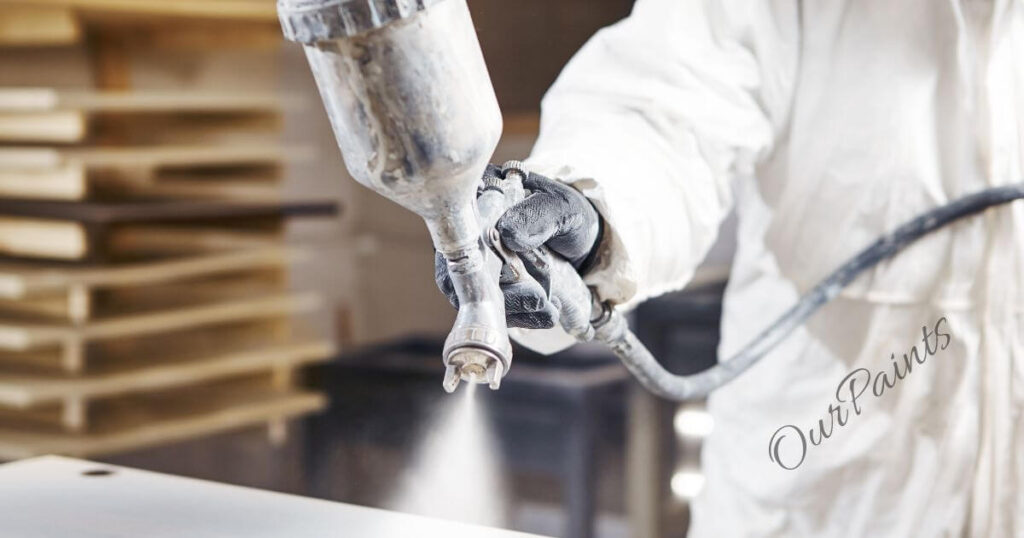
Understanding the nuances of spray paint for glass will empower you to create beautiful, personalized glass projects. By following best practices and experimenting with various techniques, you can turn plain glass into extraordinary works of art that reflect your creative vision.
It’s important to differentiate between regular spray paint and spray paint specifically designed for glass to ensure you achieve the best results in your glass projects. Here are the key distinctions:
Adhesion:
Glass-Specific Spray Paint:
Paints designed for glass are formulated to adhere well to smooth, non-porous surfaces like glass. They have enhanced adhesion properties, ensuring that the paint bonds securely to the glass surface.
Regular Spray Paint:
Standard spray paints are generally designed for porous surfaces like wood, metal, or plastic. While they may adhere to glass to some extent, they often do not bond as effectively, leading to issues like peeling and poor durability.
Opacity:
Glass-Specific Spray Paint:
Glass paints are formulated to provide better opacity, allowing them to cover the glass surface more effectively and achieve a more vibrant, solid color. This is essential for achieving the desired look on glass.
Regular Spray Paint:
popular spray paints can be translucent or semi-transparent. When applied to glass, they’ll no longer offer the strong, opaque finish this is frequently required for glass initiatives.
Durability:
Glass-unique Spray Paint:
Paints designed for glass are usually greater long lasting and immune to environmental factors like moisture and UV light. This makes them suitable for glass items that may be exposed to varying conditions.
Regular Spray Paint:
Standard spray paints may not offer the same level of durability or resistance. When used on glass projects intended for outdoor use or heavy handling, they may be more susceptible to chipping and fading.
Transparency Control:
Glass-Specific Spray Paint:
These paints often come in various opacities, from transparent to opaque. This allows for better control over how much light passes through the glass, making them suitable for decorative and functional glass items.
Regular Spray Paint:
Standard spray paints may not offer this range of opacities and are not as well-suited for projects where transparency control is essential.
Color Range and Specialty Finishes:
Glass-Specific Spray Paint:
Glass paints come in a wide range of colors and specialty finishes, such as frosted, stained glass, and sea glass effects. This variety allows for more creative possibilities when working with glass.
Regular Spray Paint:
While standard spray paints offer many color options, they may not provide the specialty finishes needed for glass-specific effects.
Best Spray Paint for Glass:
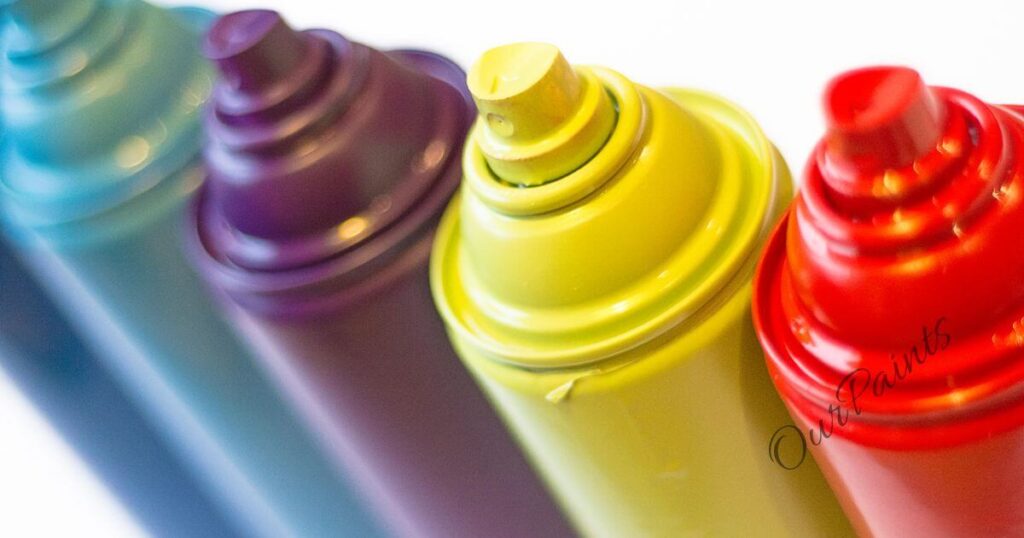
Choosing the best spray paint for glass depends on your specific project and the desired effect you want to achieve. Here are some top options for different glass applications:
Krylon Stained Glass Paint:
Designed especially for glass, this paint is right for growing a stained glass impact. It affords colorful, translucent colorings and is perfect for including a hint of elegance to glass windows, vases, or other ornamental items.
Rust-Oleum Frosted Glass Spray Paint:
In case you need to feature a frosted, semi-transparent finish to glass, this paint is an incredible desire.It’s perfect for privacy screens or creating decorative glassware with a frosted look.
Krylon Sea Glass Spray Paint:
For a sea-glass-inspired finish, this paint imparts a frosted, beachy look to your glass projects. It’s perfect for achieving a coastal and tranquil atmosphere.
Montana Gold Acrylic Professional Spray Paint:
This is an excellent choice for artists seeking a professional finish on glass. It offers exceptional adhesion and a broad spectrum of colors, including metallic and matte options.
Design Master Tint IT Transparent Spray Paint:
For adding a subtle, translucent tint to your glass projects, this spray paint offers a range of colors. It’s great for achieving delicate and colorful effects.
Montana Cans Marble Effect Spray Paint:
If you want to create a unique marbled finish on glass or other surfaces, this spray paint can help you achieve captivating effects. It’s versatile and perfect for artistic and DIY projects.
Rust-Oleum Specialty Mirror Effect Spray Paint:
While not entirely transparent, this paint creates a reflective, mirror-like finish on glass. It can add depth and intrigue to glass surfaces, making them look like mirrors.
Krylon UV-Resistant Clear Acrylic Coating:
If you want to add a protective, transparent layer to your glass projects, this clear acrylic coating is perfect. It helps preserve the beauty of your project and offers UV protection.
Whilst choosing the great spray paint to your glass assignment, consider factors including the challenge’s meant use, color necessities, and the preferred stage of opacity or transparency. Additionally, continually observe the producer’s commands for floor instruction, software, and drying times to make certain the quality outcomes.
Factors to Consider Before Buying:
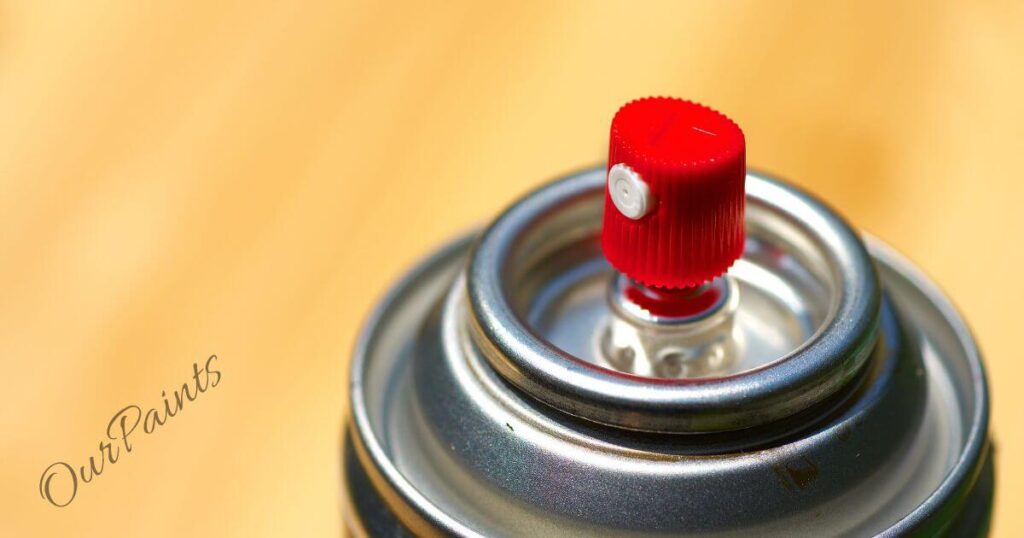
Before purchasing spray paint for glass, consider the following factors to ensure you choose the right product for your specific project:
Type of Glass Project:
Determine the nature of your glass project. Are you painting a window, vase, glassware, or another glass surface? The type of project will influence your choice of paint.
Opacity Level:
Decide whether you want a transparent, translucent, or opaque finish. Some projects may require you to control the level of transparency, so choose a paint that matches your desired effect.
Color Range:
Consider the color options available with the spray paint. Choose a color that complements your project or allows you to express your creative vision.
Finish:
Determine the finish you want, such as glossy, matte, frosted, stained glass, or specialty effects like marbling or mirror-like finishes. The finish can significantly impact the final look of your project.
Durability:
Assess the durability requirements of your project. If the glass item will be exposed to the elements or frequent handling, you’ll need a paint that offers good durability and resistance to wear and tear.
Adhesion Properties:
Check whether the spray paint is designed specifically for glass surfaces. Paints designed for glass have enhanced adhesion properties, ensuring better bonding to smooth, non-porous surfaces.
Compatibility:
Ensure the paint is compatible with the type of glass you are working on, as different glass compositions may require different types of paints.
Ventilation and Safety:
Consider the workspace where you’ll be using the paint. Ensure you have proper ventilation, and follow safety precautions to protect yourself from fumes and particles.
Application Ease:
Assess the user-friendliness of the spray paint. Look for paints that provide an even and smooth application without dripping or streaking.
Curing and Drying Time:
Some spray paints may require specific curing or drying times. Consider your project timeline and follow the manufacturer’s instructions for optimal drying and curing conditions.
Surface Preparation:
Plan for proper surface education, which may encompass cleaning the glass to eliminate dirt, oils, and residues. Make sure that the floor is dry and free from dirt and lint.
Artistic Intent:
If you have artistic intentions and want to explore different techniques like stenciling, marbling, or layering, choose a paint that allows for such creativity.
Budget:
Consider your budget and choose a spray paint that offers the features and quality you need without exceeding your financial constraints.
Exploring Different Spray Paint Formulas:
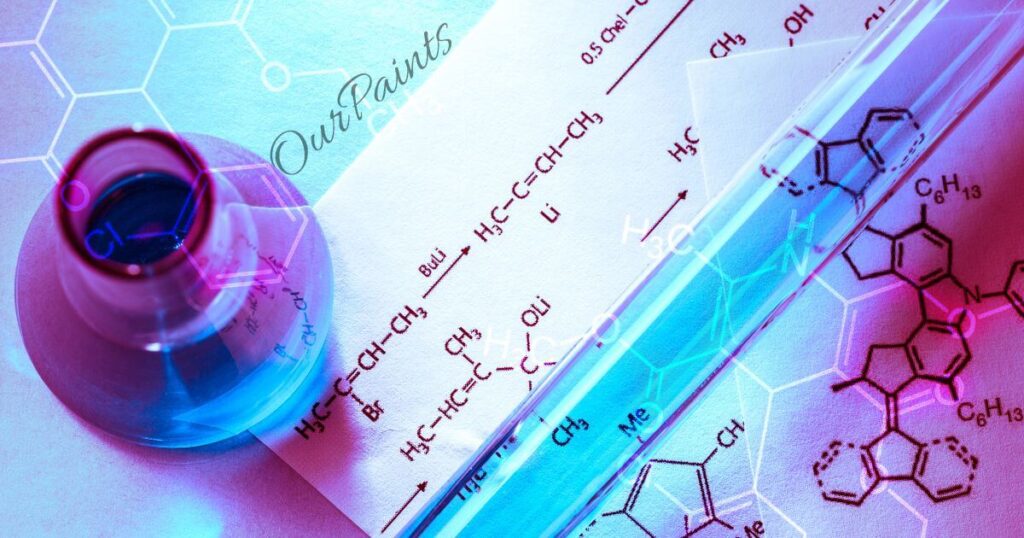
The market offers a wide array of spray paint formulas specifically designed for glass. Some of the popular formulas include:
Glass Paint
Glass paint is a flexible option that provides remarkable insurance and colorful shades. It’s miles to be had in each obvious and opaque finish, permitting you to gain diverse effects on glass surfaces.
Glass Etching
Glass etching spray paint is designed to create a frosted or matte finish on glass. It provides a unique texture and adds a touch of elegance to any glass project.
Frosted Spray Paint
Frosted spray paint creates a smooth, frosted appearance on glass surfaces. It is an ideal choice for privacy screens, decorative glassware, or creating a diffused light effect.
Each spray paint formula has its own advantages and limitations. Glass paint offers versatility, while glass etching and frosted spray paint cater to specific effects. Carefully consider
your desired outcome and project requirements to select the most suitable formula for your glass project.
Spray Paint Techniques for Glass:
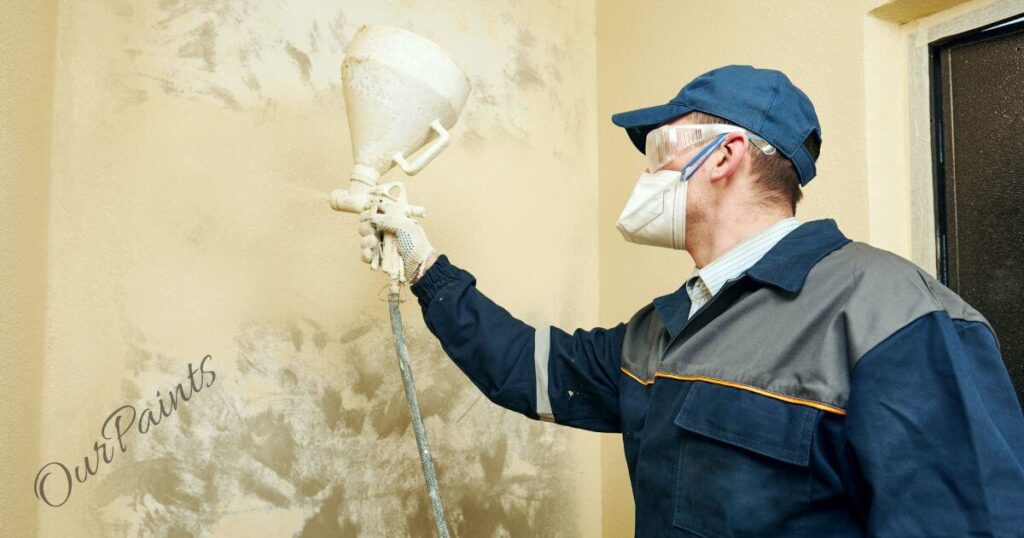
To ensure a smooth and professional-looking finish on your glass projects, mastering proper
Application techniques are essential. Here are step-by-step instructions for preparing and priming glass surfaces, as well as guidance on using different application techniques:
Gradient or Ombre Effect:
Create a smooth transition of color from one stop of the glass to the opposite. Start with one color on the pinnacle, spray a bit heavier, after which regularly transition to any other color as you circulate downward. You can achieve a seamless gradient by lightly misting the first color over the second color.
Stenciling:
Use stencils to create complicated styles or designs at the glass surface. At ease the stencil in the area, and then spray paint over it, ensuring to apply paint lightly. Once the paint dries, cautiously dispose of the stencil to reveal your painted design.
Marbling:
Apply a base coat of one color on the glass. While the base coat is still wet, lightly spray another color on top. Use a brush or sponge to blend the colors together, creating a marbled effect. This technique adds an organic and artistic dimension to your glass.
Texture with Salt or Alcohol:
While the paint is still wet, sprinkle table salt or apply rubbing alcohol drops to the glass surface. Allow the salt or alcohol to interact with the paint as it dries, creating unique textures and patterns. This technique can add fascinating depth to your glass artwork.
Reverse Painting:
Paint the underside of the glass to create a glossy, protective surface on top. This is particularly useful for glassware or decorative pieces, as it preserves the painted design.
Masking and Etching:
Apply masking tape, stickers, or vinyl shapes to the glass surface to create patterns or designs. Spray paint over the whole floor, inclusive of the masked regions. Once the paint dries, cast off the covering to expose your design.
You may additionally enhance this approach by way of the use of etching creams to create permanent, textured patterns at the glass.
Layering and Fading:
Start with a base coat on the glass. After it dries, spray a second color over it while holding the can farther away. This creates a fading or misty effect. Experiment with multiple layers and colors to achieve multi-dimensional artwork.
Combining with Other Mediums:
Experiment by combining spray paint with other mediums like glass markers, glass beads, or stained glass lead to create multi-dimensional and textured art pieces.
Mastering these techniques will allow you to achieve professional results and elevate the overall quality of your glass projects.
Tips for Achieving Desired Results:
To achieve the desired results when spray painting on glass, follow these tips and best practices:
Surface Preparation:
Start with a clean and dry glass surface. Use a glass cleaner to remove any dirt, grease, or residues. A lint-free cloth can help ensure a smooth surface.
Select the Right Spray Paint:
Choose spray paint specifically designed for glass. This type of paint has enhanced adhesion properties for smooth and non-porous surfaces, ensuring better results.
Practice and Test:
Before working on your main project, practice on a small piece of glass to get a feel for the paint and the desired technique. This allows you to adjust your spraying technique as needed.
Use Multiple Thin Coats:
Apply multiple thin coats of paint rather than one heavy coat. This prevents drips and ensures even coverage. Wait for each coat to dry before applying the next.
Maintain a Consistent Distance:
Hold the spray can at a consistent distance from the glass surface (typically 6-8 inches or 15-20 cm). This helps ensure even coverage and avoids splotches or streaks.
Overlapping Strokes:
Spray in overlapping, parallel strokes to ensure complete coverage. This technique helps avoid missed areas. Keep your hand steady and maintain a consistent spraying speed.
Spray Evenly:
Ensure that you are pressing the spray nozzle evenly and consistently throughout the entire application. Inconsistent pressure can result in uneven paint distribution.
Work in a Well-Ventilated Area:
Spray paint in a well-ventilated space, preferably outdoors or in a dedicated workspace with proper ventilation. Wear a respirator or mask to protect against fumes and fine particles.
Drying and Curing:
Follow the manufacturer’s instructions regarding drying and curing times. Some spray paints require specific curing times to achieve the best results. Be patient and avoid touching or disturbing the paint until it has fully cured.
Protection and Sealing:
Consider applying a clear sealant to protect your glass artwork, especially if it will be exposed to wear and tear. Ensure that the sealant you choose is compatible with the spray paint you used.
Experiment with Techniques:
Don’t be afraid to experiment with various techniques, such as stenciling, marbling, masking, layering, and etching. These techniques can add uniqueness and depth to your glass projects.
Avoid Direct Sunlight:
In case your glass art can be displayed, preserve it away from direct daylight, as prolonged exposure may additionally reason the paint to fade over the years.
Precautions:
Working with spray paint, especially on glass, requires some precautions to ensure your safety and the quality of your project. Here are important precautions to consider:
Ventilation:
Always operate in a well-ventilated environment, such as outside or in a room with sufficient airflow. Proper ventilation aids in the dispersal of fumes and the prevention of the accumulation of potentially hazardous vapors.
Protective Gear:
Wear adequate protection equipment, such as safety goggles, gloves, and a spray paint respirator or mask. This guards against chemical exposure to your eyes, skin, and respiratory system.
Read Instructions:
Carefully read and follow the manufacturer’s instructions on the spray paint can. This includes information about proper usage, drying times, curing times, and any safety precautions specific to the product.
Preparation:
Clean the glass surface thoroughly before painting to remove dirt, oils, and residues. Ensure the glass is dry and free from dust and lint.
Fire Safety:
Keep spray paint away from open flames, sparks, or any sources of ignition. The propellants in spray paint are highly flammable.
Proper Storage:
Store spray paint in a cool, dry place away from direct sunlight and heat sources. Keep it out of the reach of children and pets.
Aerosol Disposal:
Properly dispose of empty or unused spray paint cans according to local waste disposal regulations. Do not puncture or incinerate aerosol cans.
Spraying Distance:
To maintain equal coverage, keep your spraying distance from the glass surface consistent (usually 6-8 inches or 15-20 cm). Avoid going too near, which can cause pooling, or getting too far, which can cause uneven application.
Spraying Technique:
Ensure that you apply the paint evenly and smoothly. Use overlapping strokes to avoid streaks or blotches. Hold the can steady, and maintain a consistent spraying speed.
Safety Precautions for Overspray:
Be mindful of potential overspray. Cover nearby objects and surfaces that you don’t want to paint with drop cloths or masking materials.
Curing Time:
Respect the drying and curing times specified by the manufacturer. Do not touch or handle the painted glass until it has fully cured to avoid smudges or damage to the finish.
Sealing:
Consider applying a clear sealant to protect your painted glass project from wear and tear. Follow the manufacturer’s instructions for sealing, if applicable.
Disposal of Painted Glass:
If you need to dispose of glass items with paint, check local regulations for safe disposal procedures, as some paints may contain hazardous materials.
How to Properly Seal Spray Paint on Glass:
Sealing spray paint on glass is a crucial step to protect your artwork and ensure its longevity. Here’s how to properly seal spray paint on glass:
Steps to follow:
Choose the Right Sealant:
Select a clear glass sealant that is compatible with the type of spray paint you used. If you’re unsure, read the instructions on the spray paint can or contact the manufacturer for recommendations.
Prepare Your Workspace:
Work in a well-ventilated area or outdoors to ensure proper air circulation. Protect your work surface with a drop cloth or newspaper to catch any drips or overspray.
Wear Protective Gear:
Put on gloves to protect your hands and a mask or respirator to avoid inhaling fumes from the sealant.
Clean the Glass:
Ensure the spray-painted glass is clean and free from dust or debris. Clean it with a glass cleaner or a mild detergent and allow it to dry completely.
Masking:
If there are areas on your glass artwork that you do not want to seal, use painter’s tape or masking tape to mask off those areas. Ensure the tape adheres firmly to prevent sealant from seeping underneath.
Sealant Application:
Shake the glass sealant well according to the manufacturer’s instructions.Hold the can about 6-8 inches (15-20 cm) away from the glass surface.Apply the sealant with short, even sprays, overlapping each pass slightly to ensure even coverage.
Spray a light, even coat over the entire painted surface. Avoid heavy application to prevent drips.
Drying Time:
Follow the manufacturer’s recommended drying time, typically between 15 minutes to 1 hour, depending on the brand and type of sealant.
Additional Coats (if necessary):
If you desire additional protection or a glossier finish, apply a second coat of sealant after the first coat has dried. Follow the same application process.
Curing Time:
After applying all desired coats, allow the sealant to cure fully. This can take anywhere from 24 hours to several days, depending on the product. Be patient and avoid touching or moving the glass during this time.
Remove Masking (if used):
Once the sealant has fully cured, carefully remove any masking tape to reveal the sealed surface.
Clean Up:
Properly dispose of any used masking materials, gloves, and any waste materials following local regulations.
Removing Spray Paint from Glass:
Removing spray paint from glass can be a bit challenging, but it’s possible with the right tools and techniques. Here’s how to remove spray paint from glass:
Steps to follow:
Safety Precautions:
Work in a well-ventilated area and wear gloves to protect your hands.
If the spray paint remains moist or particularly fresh, cautiously scrape off as much of the excess paint as possible using a razor blade scraper or software knife. Hold the blade at a mild angle to keep away from scratching the glass.
Easy with Rubbing Alcohol or Acetone:
Moisten a cloth or paper towel with rubbing alcohol or acetone. Gently rub the spray-painted area to remove the remaining paint. Do not use excessive force to prevent scratching the glass.
Wash with Soapy Water:
Mix a solution of heat water and some drops of dish soap. Dip a smooth bristle brush or material into the soapy water and scrub the glass to do away with any last paint residue.Rinse with clean water.
Use Vinegar:
If there are still paint marks on the glass, soak a cloth or paper towel in white vinegar. Place it over the affected area and let it sit for a few minutes. The vinegar can help soften the paint for easier removal.
Scrub Again:
After allowing the vinegar to sit, scrub the glass again using the soft bristle brush or cloth. This should help remove any softened paint.
Rinse and Clean:
Rinse the glass thoroughly with clean water to remove any remaining paint or vinegar. Then, use a glass cleaner to clean the entire glass surface.
Inspect for Residue:
Examine the glass for any remaining paint residue. If any stubborn spots persist, you can repeat the process or use a commercial paint remover designed for glass. Follow the product’s instructions carefully.
Dry and Polish:
As soon as the glass is smooth and unfastened from paint, dry it with a lint-loose material or paper towels. For a sophisticated finish, you can use glass cleanser and a microfiber cloth to make the glass sparkle.
Please observe that these strategies are generally powerful for getting rid of spray paint from glass, but the success may range relying on elements which includes the kind of spray paint, how long it’s been on the glass, and the glass’s surface situation. Workout warning whilst using a razor blade or harsh chemicals to avoid scratching or unfavorable the glass.
Conclusion:
Choosing the best spray paint for glass projects is paramount to achieving exceptional results and elevating the visual appeal of glass surfaces. By understanding the different spray paint formulas, considering factors such as suitability, safety, and compatibility ,and exploring various techniques and project ideas, individuals can unleash their creativity and transform ordinary glass objects into remarkable works of art.
Remember, whether you are a DIY enthusiast or a professional artist, the right spray paint can make all the difference in creating stunning and long-lasting finishes on glass. So, embark on your glass projects with knowledge, confidence, and the best spray paint in hand.
FAQs:
What is the best spray paint for glass?
The choice of the best spray paint for glass depends on your specific project and desired effects. Look for paints designed for glass surfaces, as they provide good adhesion and opacity. Brands like Krylon, Rust-Oleum, and Montana offer popular options for glass painting.
Can I use regular spray paint on glass, or do I need glass-specific paint?
While you can use regular spray paint on glass, it’s advisable to use spray paint specifically formulated for glass. Glass-specific paints offer better adhesion and opacity, ensuring a more vibrant and durable finish.
How do I prepare glass surfaces for spray painting?
Proper surface preparation is crucial. Clean the glass very well with a glass cleaner to get rid of dirt and grease. Make sure the surface is dry, clean, and loose from dust and lint earlier than portrayed.
Is it necessary to seal spray paint on glass?
Sealing spray paint on glass is recommended to protect the artwork and enhance its longevity. A clear glass sealant can add a protective layer and prevent chipping or fading of the paint.
Are there spray paints specifically for transparent or opaque finishes on glass?
Yes, some spray paints are designed for transparent finishes, allowing light to pass through, while others are intended for opaque finishes. The choice depends on the desired effect for your glass project, and there are paints available for both options.


Pink Loveee, Seduction 513, Its Kaai Only Fans Leaks( https://Discord.GG/UCS )